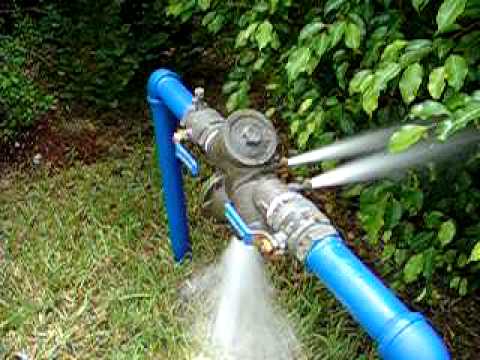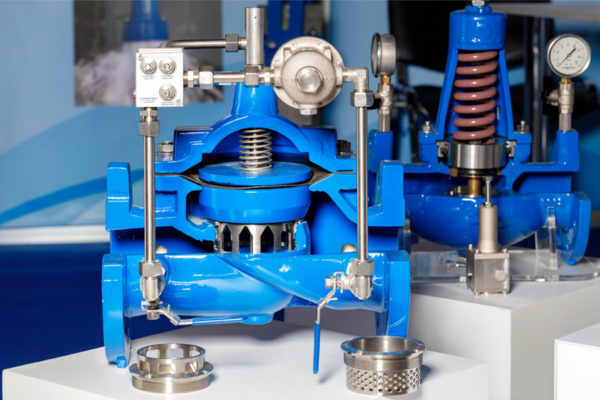Where is Australia at with backflow prevention?


Australia is a modern society with high quality living standards and arguably some of the most sophisticated infrastructure in telecommunications, energy and water supply as seen anywhere in the world.
The protection of the drinking water supply is paramount to human health and the level of treatment is covered by world health organisation guidelines. Why then is the management of local backflow prevention programs under resourced and almost hidden away? Many local authorities take the ‘head in the sand’ approach when they should be addressing the issue with the high priority it deserves.
Plumbing systems are not fixed in eternity but are designed to evolve with the requirements needed to assist growth. Therefore they are open to modification so that additional services and fixtures can be added. This evolution though, means that the likelihood of a cross connection being created is increased.
This is not a new phenomenon, records show that in as early as 1906, the ASSE (American Society of Sanitary Engineers) noted that the increased sophistication of plumbing meant that cross connections and backflow were common occurrences and to reduce the risk of a backflow incident, additional non-return valves were needed in the supply system.
We have come a long way since then and most modern societies understand what backflow is and have mandated ways to reduce the risk to their drinking water. The use of backflow preventers has increased year after year as local water suppliers and councils manage their connections by containment backflow programs.
This is a good thing, I hear you say, protecting the water in the supply mains from cross connections that may exist or be made by untrained or unsuspecting people doing plumbing work within the property. It is a good thing, as long as the authority has a program for recording and managing the devices that are installed so that the annual maintenance and testing is carried out in accordance with the relevant Australian Standards.
In a society where governance is king and we all have a duty of care to ensure that our actions and obligations are fulfilled, who is responsible when an unmanaged containment device fails and allows a backflow incident to pollute the mains water supply? Where does the buck stop when people who consume water from the polluted mains supply get sick or worse still – die from poisoning?
Legal opinion would probably suggest it was the water provider and maybe even the CEO of that provider. In the case of a death, a coronial investigation would explore how and where the issue occurred and if the water provider had an effective backflow data base and management plan which managed the yearly testing and maintenance of each device within their region. The CEO of that organisation is responsible for ensuring that it operates in compliance with the various legislation and best practices.
The Plumbing Code of Australia (PCA) provides a nationally accepted and uniform set of technical requirements for all areas of plumbing.
It is developed by the Australian Building Codes Board (ABCB) on behalf of the Commonwealth, State and Territory Governments and is referred to as the plumbing regulation in all states and territories. The PCA references a number of Australian Standards and the Standards referenced in the PCA fall under the PCA’s Deemed-to-Satisfy provisions and compliance with these Standards represents the most common method of satisfying the PCA performance requirements.
In the case of backflow prevention, AS/NZS 3500.1 Plumbing and drainage – Water services, is the applicable Standard. Page 22, Clause 4.4.6 Commissioning and maintenance states that testable backflow prevention devices shall only be used where there is a maintenance program for device registration and test certification. Where there is no such program, these devices shall not be fitted and the standard air gap requirements shall apply.
Therefore one may conclude that water suppliers that do not have a management program in place for the backflow devices installed within their supply network are not in compliance with the plumbing regulations.
This is very common throughout Australia. Some water suppliers have extensive well managed programs, others have nothing at all and many are somewhere in between. Millions and millions of dollars are spent annually to treat water to drinking standard so why do we penny pinch when it comes to managing the program to ensure the water remains safe to drink?
Peter McLennan has been involved with Backflow Prevention in Australia since the late 1980s. He is the Secretary of the Backflow Prevention Association of Australia Inc., Secretary of the Backflow Prevention Association QLD Inc. and Chairman of the National Backflow Industry Group. Visit www.bpaa.org.au to find out more about how the Backflow Prevention Association of Australia Inc. can help you understand Cross Connection Control and Backflow Prevention.
Backflow Prevention Association of Australia Inc.
www.bpaa.org.au
